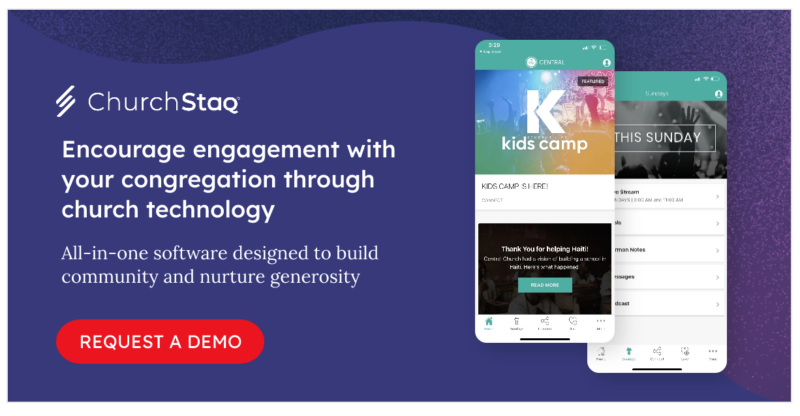7 Must-Have Apps and Tools for Busy Pastors
We live in a complicated world with lots of demands competing for our attention. Do you ever feel completely overwhelmed with your workload, what’s being asked of you, and how to get it all done well and on time? We’ve all been there.
A 2015 LifeWay Research survey showed that 84 percent of pastors say they’re on the clock 24 hours a day. More than half of pastors called their role “overwhelming.” An earlier LifeWay Research survey suggested that half of all full-time pastors worked more than 50 hours a week.
If that’s you, you’re not alone.
Your peers are right there with you. But what if you could get a little more time each week simply by taking advantage of a few easy-to-use technology tools that could boost your productivity and focus? Take these seven easy-to-use tools as an example. Add them to your weekly agenda, and you may find yourself with more time every single week.
1. Logos Bible Software
You probably block off significant time each week to prepare for preaching and teaching. It’s a big part of what God has called you to do. But it’s not all He has called you to do. Digital Bible software, like Logos, can help save time and, frankly, prepare better messages.
Bible software saves you time because it means your library is at the tip of your fingers. You no longer have to wonder what Spurgeon and your favorite Bible dictionary has to say about Matthew 9:23. No need to search painstakingly through your resources independently to find related insights.
Instead, type the verse into Logos’ search engine, and you’ll get everything your library has to say on the verse instantly. Because it’s all coming in digitally, you can easily transfer what you’re discovering to your sermon manuscript or notes. A digital library is also highly mobile and available on your tablet or smartphone. That means you can work on your sermon whenever God impresses you to do so—not just when you’re sitting in your office.
Logos isn’t the only answer either. The digital Bible space has tons of options—including WORDsearch, Olive Tree, and BibleGateway.com. Each platform is different, but none of them are difficult to use, regardless of your tech experience.
2. Evernote
Think of all the documents you try to keep track of each week. You’ve got sermon notes, counseling notes, ideas you’ve written on the back of napkins—and all those articles you’ve read that you’re sure will make it into a future sermon. What do you do with all of that stuff? If you’re like most pastors, you have a different filing system for each (assuming you have any organizational system at all). But the key to any organizational system isn’t where you put it today—it’s how you look for it tomorrow. Evernote helps you find it tomorrow (or three years from now).
Say you’ve saved a great news story about a father who courageously runs into a flaming inferno to rescue his daughter. Three years later, when you’re doing that sermon on courage, you’ve forgotten all about that story—and the 15 others you’ve discovered in the meantime. Just search for your “courage” tag in Evernote, and it’s there for you to use when you preach. And here’s the most important part (you’ll notice this as a theme throughout). You can access it wherever you are—from your smartphone, tablet, or whatever device you happen to be using.
3. Wunderlist
Okay, so a task list doesn’t seem all that innovative. I get that. You can find a million task-list tools on paper and online. Wunderlist will help you keep all of your task lists together, though.
Most importantly, you can share your task lists with staff members, your significant other, your kids, or your neighbor. As a leader, you’re in charge of a variety of projects. A good digital task list will help you stay on top of all of them simultaneously. It’ll save you time, too. Keeping yourself and your staff on the same page on important projects means less duplication and less confusion. That’s worth 30 minutes a week, easy.
4. Pushpay
The world is becoming more mobile. That’s beyond question (in 2015, Americans spent on average nearly three hours a day on their mobile devices). The question is, will your church follow suit? Through Pushpay, you can drive your church’s communication (and giving) to mobile devices. That will save you—and the rest of your staff—time. You’re communicating in the language of your congregation. Your congregation isn’t using their computers or printed materials nearly as much as they use their phones. You always save time by using the preferred communication methods of those to whom you’re communicating.
5. Slack
Communicate, communicate, communicate. You’ve heard the admonition. You may have even given the admonition to others. But do you live by it? One of the biggest wastes of time we all suffer through is a lack of communication. Through Slack, you can connect with your staff or teams of lay leaders in an instant.
What sets Slack apart is how it helps you start a channel on the fly. In other words, say you’re starting work on your Christmas program. Through Slack, you can set up a “Christmas Program” channel with your worship leader, your key volunteer leader, and someone from your children’s ministry team. When something important comes up related to the program, you’ll be able to send an instant message straight to the mobile phones of either one person or the whole group. You can also set up Slack channels for a number of teams you work with each week, such as those responsible for your worship service, Sunday School teachers, or greeters.
6. Calendly
Keeping a calendar up to date is no easy task. If only you had a personal assistant, right? Well, maybe you do. If not, why not automate it? Calendly helps you automate your scheduling and get control of your calendar again.
At the end of the day, you have to balance the ease at which an organized and up-to-date calendar can provide, but you also don’t want to counteract that time with meticulously managing it. Calendly gives you the space to focus on more important things (i.e. the events filling your calendar) rather than tedious tasks that simply don’t require too much effort or time.
7. Text in Church
Keeping your church messaging clear, concise, and focused is tough. On the one hand, you don’t want to fatigue everyone in the congregation with the same kinds of communication from the stage. Now you can communicate clearly and give your congregation a “next step” that will further your mission. Text In Church is a robust texting service for church leadership and pastors you definitely want to check into.
You’ll notice a common theme with all of these tech tools. They all rely heavily on mobile engagement. You may have a love-hate relationship with mobile technology. You may love the ability to communicate easily wherever you are. You also hate the ability to communicate wherever you are. That’s understandable. But mobile technology is here to stay. The tools above can help you use the best parts of mobile technology to save yourself valuable time every week. You deserve the extra time. You need the extra time.
Not all church tech tools are created equally. Discover the tried and true method for finding and buying the technology that will best serve your church. Download the free Church Technology Buyer’s Guide today!
Featured Content
You May Also Like


